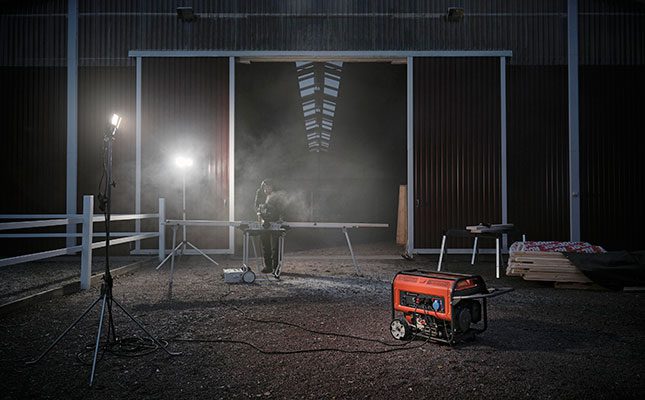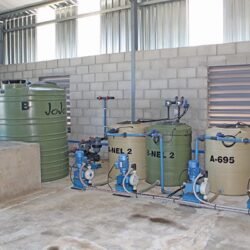Wynand Lombaard, product and pricing specialist at Husqvarna, says safety is paramount when operating generators. “While these machines offer a reliable power source, it’s crucial to follow safety precautions to mitigate potential hazards,” he says.
To keep the lights on and your family warm, Lombaard offers six safety tips that must be followed when operating a generator:
- Never run a generator in a closed space or indoors: Generators must only be operated in open areas with good air flow to prevent carbon monoxide build-up. You should never run your generator in a partially closed room, garage or inside your house. The ideal situation is to run your generator in a well-ventilated, covered area that is at least 5m from your house or office, with the engine exhaust directed away from any windows and doors.
- Don’t attempt to ‘backfeed’: Never attach a generator directly to the electrical system of your home or office by plugging the generator into a wall outlet. Known as ‘backfeeding’, this practice puts utility workers, your neighbours and your household at risk of electrocution. It also bypasses some of the built-in circuit protection devices, so you could end up frying some of your electronics. If you are operating a business, it’s VERY important that you do not run a welder or an inverter off a generator as it will lead to catastrophic failure of the generator.
- Water and electricity don’t mix: To avoid electrocution, never touch the generator with wet hands. Keep your generator dry and do not use it in rainy or wet conditions. If you are outdoors, operate the generator on a dry surface under an open canopy-like structure, such as under a tarp held up on poles. If you must use an extension cord, it should be a heavy-duty cord rated for outdoor use (in watts or amps). Check that the entire cord is free of cuts and that the plug has all three prongs, critical to protect against a shock if water has collected inside the equipment.
- Storing and using fuel: If you have a petrol or diesel generator, you will need to keep extra fuel on hand. Double-check that you are using the correct type of fuel as specified in the instructions and store it in an appropriate safety container in a cool, well-ventilated place (definitely not next to the generator). When you need to add more fuel, make sure that the generator is switched off and cooled down. And to prevent youngsters from accessing the fuel, store it in a locked cage or cabinet.
- Keep the area clear:Generators are small engines, and as such, give off a lot of heat. Wear protective gloves before touching your generator and prevent fires by keeping it well clear of any items. And always keep a fire extinguisher close at hand.
- Maintenance: And finally, like your car, service your generator regularly to keep it in optimal condition and running smoothly. This will also further ensure your safety when you are using it.
For more information or to view Husqvarna’s range of robust and reliable generators, visit www.husqvarna.com/za/generators/.




